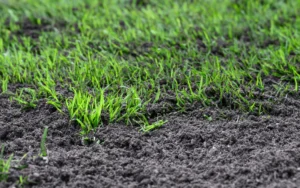
Keeping cool during Australia’s sweltering summer months is essential, but rising cooling costs can quickly take a toll on your household budget. With energy prices on the rise and inefficient habits compounding the issue, many households are paying more than they need to. By understanding the factors driving up cooling costs, you can make informed decisions to lower your bills without compromising comfort.
Inefficient Air Conditioning Systems
One of the most significant contributors to high cooling costs is the performance of your air conditioning unit. Older systems or poorly maintained units can struggle to operate efficiently, consuming more electricity to achieve the same cooling output.
Common issues include:
- Dirty filters: Clogged air filters restrict airflow, forcing the system to work harder.
- Low refrigerant levels: This reduces the unit’s ability to cool effectively.
- Worn components: Ageing parts may lower the system’s overall efficiency.
Solution: Regular servicing of your air conditioning system ensures it runs at peak efficiency. Replacing outdated models with energy-efficient alternatives, such as those rated 4 or 5 stars, can also result in significant savings.
Poor Insulation
A home with insufficient insulation is a key driver of higher cooling costs. Without proper insulation, the cool air generated by your air conditioning escapes, and hot air from outside seeps in, making your system work overtime to maintain a comfortable temperature.
Areas to check include:
- Roof and ceiling insulation
- Wall insulation
- Windows and doors
Solution: Upgrade your insulation and install weather stripping around doors and windows to minimise air leakage. Double-glazed windows are another excellent way to improve your home’s thermal performance.
Incorrect Thermostat Use
Your thermostat settings play a pivotal role in your cooling costs. Setting your air conditioner to an unnecessarily low temperature or frequently adjusting the thermostat can lead to excessive energy use.
Best practices include:
- Setting the thermostat to 24–26°C, which is generally the most energy-efficient range for cooling.
- Using programmable or smart thermostats to maintain consistent temperatures.
- Avoiding the temptation to set the thermostat lower than needed when you first turn on the air conditioning—it won’t cool the room faster but will use more energy.
Overreliance on Air Conditioning
Using air conditioning as the sole method to keep cool can drive up energy costs. Complementing it with other cooling strategies reduces the strain on your system and your electricity bill.
Alternative cooling strategies:
- Use ceiling or pedestal fans to circulate air.
- Close blinds or curtains during the hottest parts of the day to block out heat.
- Open windows in the evening when temperatures drop to let cooler air in.
Solution: Adopt a combination of methods to maintain a comfortable temperature while reducing your reliance on air conditioning.
Poor Home Design
The design of your home has a long-term impact on cooling costs. Homes with large, unshaded windows, dark roofs, or insufficient ventilation tend to heat up more quickly, requiring more energy to cool.
Common issues include:
- Lack of shading over windows and outdoor areas.
- Roofs made from heat-absorbing materials.
- Poorly ventilated spaces that trap hot air.
Solution: Install external shading, such as awnings or verandahs, to block direct sunlight. Painting your roof in reflective colours and installing roof ventilation systems can also help keep your home cooler.
High Electricity Tariffs
Australia’s rising electricity tariffs are another factor contributing to expensive cooling bills. Even if your air conditioning system is running efficiently, the cost per kilowatt-hour adds up quickly during summer.
Solution: Compare energy plans to find a provider offering more affordable rates. Time-of-use tariffs can also help you save if you schedule your cooling during off-peak periods.
Neglecting Energy-Efficient Practices
Small changes in daily habits can have a big impact on cooling costs. However, many households overlook these simple measures:
- Leaving doors open: This allows cool air to escape into unused areas.
- Using appliances during peak heat: Ovens, dryers, and other heat-generating appliances increase indoor temperatures, making your air conditioner work harder.
- Ignoring maintenance: Skipping routine cleaning and servicing leads to reduced efficiency over time.
Solution: Be mindful of energy-efficient practices. Close doors to unused rooms, limit appliance use during the day, and schedule regular maintenance for your air conditioning system.
The Role of Behavioural Habits
Sometimes, high cooling costs are simply the result of unintentional habits. Leaving the air conditioner running when no one is home or cooling unoccupied rooms wastes energy unnecessarily.
Solution: Use timers and zoning features to cool only the areas you’re using. Developing conscious energy-saving habits can make a noticeable difference in your electricity bill.
Invest in Solar Energy
Relying on the grid to power your cooling system can be expensive, especially during peak usage times. Solar energy offers an alternative that reduces long-term energy costs while minimising your environmental footprint.
Solution: Installing solar panels can help offset electricity usage during the day. Pairing solar panels with a battery system allows you to store energy for use in the evening when cooling demands are still high.
Take Control of Cooling Costs
Understanding what drives up cooling costs is the first step in addressing the issue. From improving the efficiency of your air conditioning system to adopting better habits and investing in home improvements, there are many ways to save. With thoughtful strategies, you can enjoy a comfortable summer without breaking the bank.




